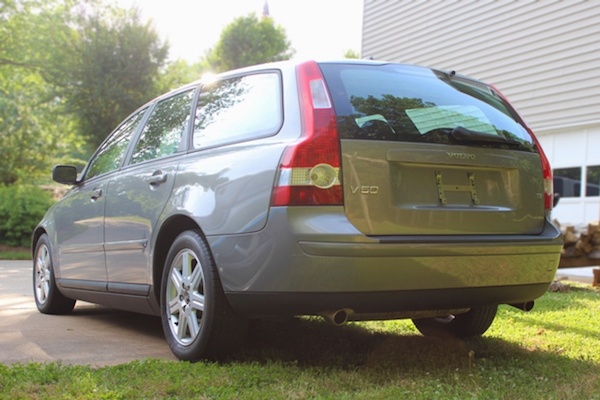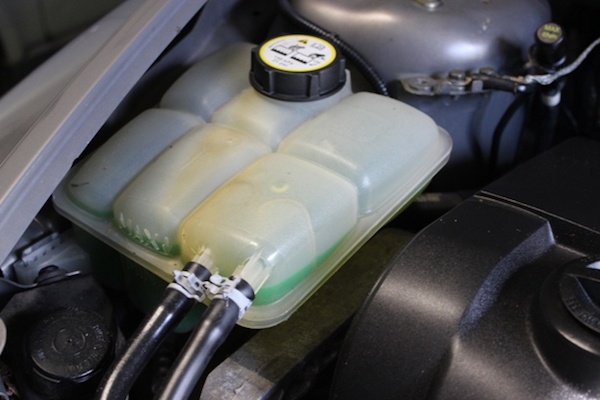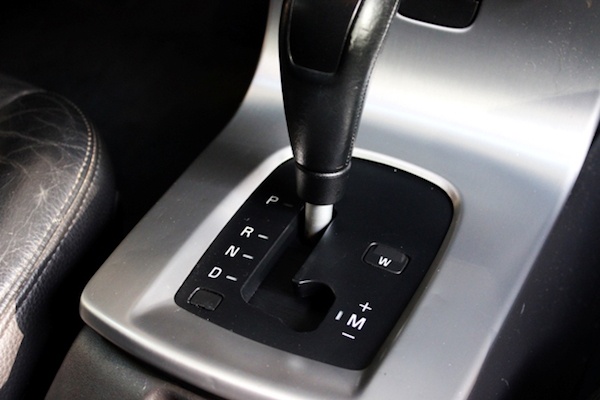Having owned two S40s, a C30, and a recently purchased V50, I have acquired quite a bit of experienced with P1 maintenance and common problems. While also having examined hundreds of Volvos when shopping for the perfect cars, I have developed a fairly solid check list for examining potential purchases. The following are some of my suggestions for buying a pre-owned P1 Volvo, but many of these items are applicable to all used cars.

General Used Car Shopping Tips
First, something that should be done prior to any used car purchased, compare the vehicle's price with the Kelly Blue Book value. Especially with Volvos, do some research on the forums to learn the distinguishing differences between the various trim levels of these cars: R-design, Dynamic, Standard, etc. The C30, for example, has a V2.0 trim level which is commonly mistaken with the R-design trim. Many of the R-design features can be transferred to the entry trim level cars, but this does not make them true R-designs. If a seller has listed their car for R-design price when it clearly is not, make sure they are aware of this inaccuracy. The price difference can be in the thousands depending on how old the car is.
Test drive the vehicle on the highway. Wobbles and shimmy in the steering wheel can be as simple as wheel balancing and alignment, or as complicate as a failed engine mount or bushing. Especially on these 10+ year old vehicles, it is likely that the engine mounts and lower control arms are due for replacement. Highway drives are also a great opportunity to confirm cruise control works, if equipped.
If you know how to drive a manual car, you know what to expect from a properly functioning manual transmission. However, do anticipate for the clutch to be lighter than expected. P1 Volvos have very light clutches, great for a novice driver, not so much fun for the sports car enthusiast. If you do not know your way around a stick, bring a knowledgeable friend along. Faulty components on a manual transmission are very costly to repair.
If you are test driving an auto, pay attention for any weird clunks or noises, especially as you change wheel rotation direction from drive to reverse. A harmless ping noise could be from axles, a clunking could be from engine mounts or worse. Volvo claims the auto transmission fluid is lifetime, but there is no such thing as a lifetime fluid. Transmission fluid should be changed out every 30k miles. However, the ECM needs to be reprogrammed for fresh fluid if it has been neglected for over 50k miles; do not expect this to be a DIY fluid flush.
As with shopping for any used car, be mindful of the vehicle's history and maintenance records. Also check under the vehicle for any potential leaks, especially from the oil pan, transmission, and the haldex system on AWD models. After going for a test drive, I advise parking the vehicle on level ground in an area where you can clearly identify if any fluids have leaked out.
Lastly, are there any aftermarket parts on the car? Cone filters and loud exhausts often suggest the vehicle has been pushed to the limits in its past. Depending on the buyer, these may be appealing features, but purchase these cars with extra caution.
Maintenance and common mechanical problems to check
Remember that the P1 S40 came out in 2004. With these cars now being over 10 years old, the first question should always be when the timing belt was replaced.
Depending on VIN, P1 timing belts are either due at 105k or 120k miles. But as suggesting by any Volvo dealer, it should also be replaced by the 10 year mark, regardless of mileage. To have a dealership replace the timing belt, accessories belts, and tensioner will cost upwards of $600. So make sure if it is due, that it has been replaced or use this service fee as a tool for negotiating the price.
A common problem with P1 Volvos is the plastic coolant reservoir cracking and breaking. It's a $60 part to replace and a very easy DIY swap, but be mindful of any spider vein cracks in the top of the reservoir. Especially if you are purchasing the vehicle long distance and intend to drive it home.

The PCV (positive crankcase ventilation) system is a commonly failed item on nearly all Volvos. Luckily, Volvo has you covered under extended warranty 205; this is not a warranty which you need to purchase. For P1 Volvos from 2008 or earlier, so long as they remain under 120,000 miles and are less than 10 years old, Volvo will replace a failed PCV system free of charge. However, the car must exhibit signs of a failed PCV in order for them to replace it under the extended warranty. Various dealerships will treat this issue differently, so always call ahead.
Torn constant velocity boots are very common for P1 Volvo axles. If you cannot get under the car, turn the wheels to full lock in both directions and try to visually examine the boots. If there is splattered CV grease through the wheel well liners, it is likely that the axles need to be rebooted or replaced. If the previous owner mentions that the axles having already been replaced, inquire if they are OEM or aftermarket. While there are good aftermarket axles available, nothing withstands mileage and time better than original Volvo parts.
Is the vehicle tuned? If it is within your ability, drive a few P1 Volvos to gain an understanding of how these cars perform. Especially if you are shopping for a 2008 or newer T5, there is a likely chance the previous owner had the Polestar factory tune installed. There are rebel blue trunk badges associated with the Polestar tune, but a previous owner may have neglected installing this badge with the tune or purchased the badge online without dropping the money for the performance software upgrade. Most Volvo dealers can run the VIN to confirm if the vehicle has been equipped with Polestar, but the easiest way to tell is simply by driving it. The difference between a stock tune and a Polestar tune is very noticeable. Considering that this is a $1000+ dealer upgrade, it may justify the cost of a higher priced car.
Cosmetics and other common issues to check
If the car has a sunroof, check for staining in the headliner or any signs of a wet floorboard in the front or back. Any car with a sunroof risk a chance for the drains got clogged up, but for aging P1 Volvos, it is very likely for these drain hoses to loosen or pop off. So long as there is no mold growth or strange odors, it's an easy problem to fix. However, the seller might not know the source or cause, so it may serve as an additional tool for price negotiation.
For automatic cars, confirm that the geartronic shift mode functions properly. It is common for the shifter blind to crack over time, which can prevent the system from responding when in manual mode. This is a cheap item to replace, but is something which should urgently be addressed. Especially since these cars do not have a low gear option for hills and dirt roads, they rely solely on the manual mode for keeping it in 2nd gear.

Be certain that FM, AM, and satellite radio modes function properly. 2008-2010 P1s have seen occasional issues with Sirius XM radio cutting out. Regardless of subscriptions status, you should still be able to listen to the Sirius demo station. The fix for this can be anywhere from a loose wire in the antenna, to a software reload.
Also confirm the CD player works and any AUX or USB inputs function properly. If the car is equipped with factory navigation, you will also want to verify that the screen opens and closes as it should. It is not the end of the world if the screen is always stuck open, but that does mean something is potentially broken.
If you are anything like me, you consider the condition of the car as an immediate sign for how well the vehicle has been loved. With that being said, if the cloth t-tech seats show cracks or tears, this is not a sign of neglect from the previous owner. Even some of the most meticulously cared for cars have had the poor designed t-tech seats tear. Remember, seat skins can be replaced. If you can overlook these minor flaws, do not let a torn seat be a deciding factor on your potential purchase.
Conclusion
If you are intimidated by turning your own wrenches, shop for newer cars or set aside ~$2000 for unexpected repairs.
If you are comfortable with getting your hands greasy, buying a car with a few fixable flaws may be financially beneficial.
Remember, the seller always wants to make a profit, but cash can speak loudly during negotiation.
Best of luck with your used car purchase and remember to check FCPEuro for any replacement parts that you might need for your new ride.











